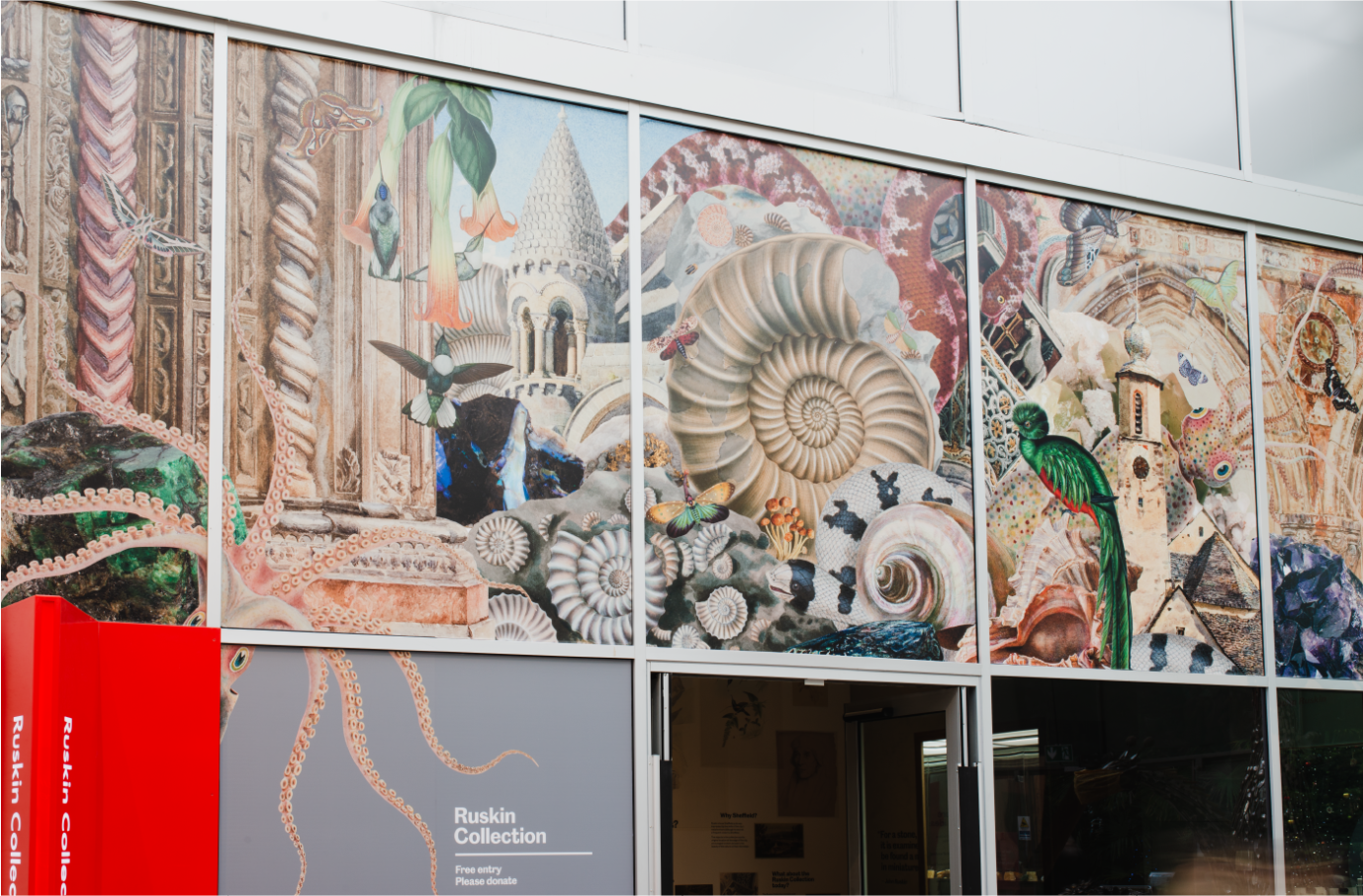
We have given the Ruskin Collection at Millennium Gallery a contemporary refresh.
It’s been a busy time for Sheffield Museums Trust; the recent merger between Museums Sheffield and Sheffield Industrial Museums has meant rolling out a new visual identity and some fresh new displays. Perhaps the most striking change can be seen at the Ruskin Collection in the Millennium Gallery. Working collaboratively with the curatorial team we devised a whole new look to refurbish this very special place.
Starting with the Avenue graphics at the entrance of the gallery, we evolved the collage approach used for our highly popular identity for 2019’s ‘Art & Wonder’ exhibition. With hundreds of images to choose from, we were able to build a complex yet balanced image across the width of the gallery. It’s a feast for the eyes and a bit of a show-stopper that people passing through the Avenue can’t miss. (We’ll let you into a secret — there’s plans for some tasty merch based on our design so keep your eyes peeled in the gallery shop.)










